When it comes to leaving your corner of the world a better place than how you found it, using biodegradable soap is a must. Today, I want to unpack the importance of using biodegradable products and provide you with an easy soap recipe made from 100% natural ingredients.
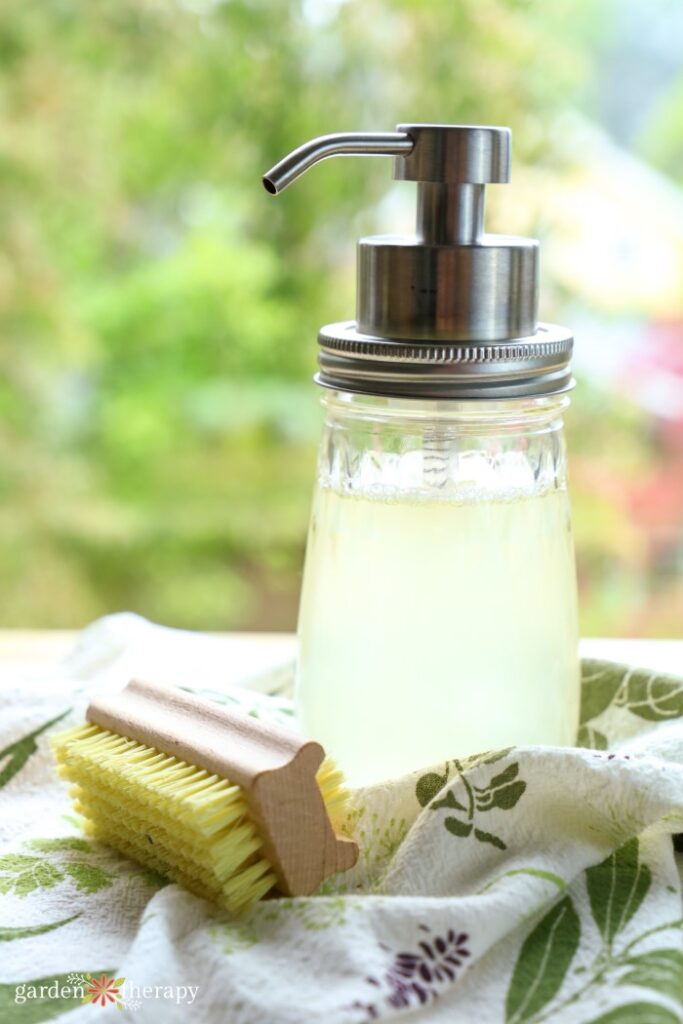
When you spend as much time as I do outside in the garden, you know how much your hands can take a beating. I end up washing my hands a ton between coming in and out of the house or even with the garden hose itself.
With all that cleaning, I want to make sure I’m being as kind to Mother Nature as possible with my greywater. Which means using a biodegradable soap!
By using biodegradable soap, I’m making sure that I’m not affecting my garden and local water sources. For years now, I’ve been making my own soaps. From bar to liquid soaps, I always stick with natural ingredients that both my body and the environment love.
And just because my soap is natural, doesn’t mean it is not powerful. This recipe for biodegradable soap can easily remove dirt, grime, and grease from the body. It’s also a wonderful soap for camping, to use for handwashing, on your body, or even the dishes.
This post will cover…
- What Does “Biodegradable” Mean?
- Why is Biodegradable Important?
- So What About Biodegradable Soaps?
- How to Use Biodegradable Soap Outside
- Lavender Biodegradable Soap Recipe
- Equipment
- Materials
- Make It!
- How to Use Biodegradable Soap
- Frequently Asked Questions About Biodegradable Soap
- More Soap Recipes
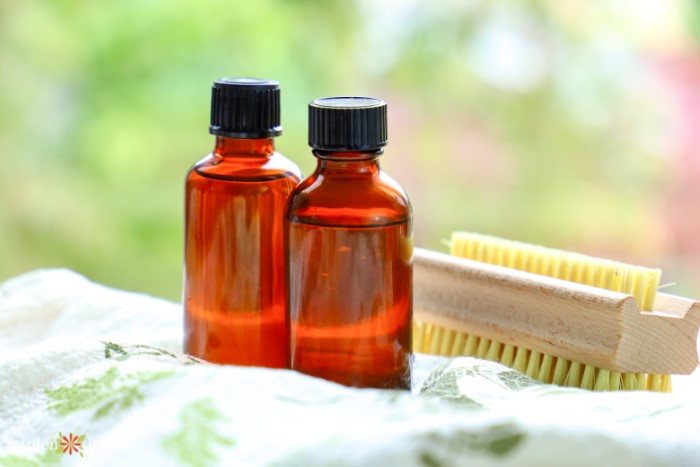
What Does “Biodegradable” Mean?
Biodegradable is a term that gets tossed around often, but many people don’t understand what it truly means for a product or material to be biodegradable. In simple terms, a biodegradable item will break down and go back into the earth with the right conditions and microorganisms and bacteria to help.
Ideally, biodegradable items should not leave any toxins behind as they degrade. However, many items even with the biodegradable label leave behind chemicals and other harmful substances when they degrade.
In a perfect work, everything biodegradable would break down quickly. This means it wouldn’t take up any landfill space and return to the earth. But oftentimes, many items labeled as biodegradable products can take years to degrade.

Why is Biodegradable Important?
Items made of plastic are heading to the landfill by thousands of truckloads a day. It can take centuries for plastic to degrade and even when it does, it leaves behind toxic substances.
Even when we send biodegradable products to landfills, they don’t have the right conditions for biodegradation. They need air, moisture, and plenty of the right bacteria to break down.
When it comes to interacting directly with our gardens and the outdoors while camping, we want to only use products that aren’t adding any toxins to the environment.
That being said, we should also care just as much when it’s running down our sink or going in our trash bins. Be aware of what you’re putting back into Mother Earth as much as possible.

So What About Biodegradable Soaps?
Most commercial soaps have surfactants, which are known as laboratory-made foaming agents. While regulated, many of these surfactants are still unhealthy for the environment and hard to filter through during water treatment processes. An easy switch is making sure you use biodegradable dish soap, hand soap, and body wash.
Since all of my bar soaps are made from vegetable oils, my cold process soap recipes are biodegradable. When bar soap is made (properly), there is no lye left. The fat reacts with the lye to create glycerol and soap.
You can also make liquid soaps if you don’t want a bar soap, especially for washing dishes while camping. Choosing the oil is the most important aspect. You want to source good quality oils (cosmetic grade) that are sourced ethically. For this reason, you will want to avoid palm oil.
As long as all your ingredients are natural and well-sourced, your soap will biodegrade with no problems. My favourite soap for camping or for use in the garden is a Castile-based liquid soap. Castile = olive oil or other plant base oil soaps!
How to Use Biodegradable Soap Outside
When using your biodegradable soap outside, there are a few things you want to keep in mind.
Never use your biodegradable soap in or near a water source. That means no washing directly in lakes, rivers, and streams. While natural, the ingredients in soap can affect the natural ecosystem of the water by adding extra nitrogen or disrupting the surface tension.
When disposing of any soapy water, try to place it in a grey water drain while camping or dig a hole 6-8 inches deep (away from a water source) and pour your water there.
At home, wash your hands wherever you like outside! Just be mindful when dumping a large amount of greywater and don’t dump it directly down a sewer drain.
Many biodegradable soaps are highly-concentrated, so be sure to follow instructions and dilute if necessary.
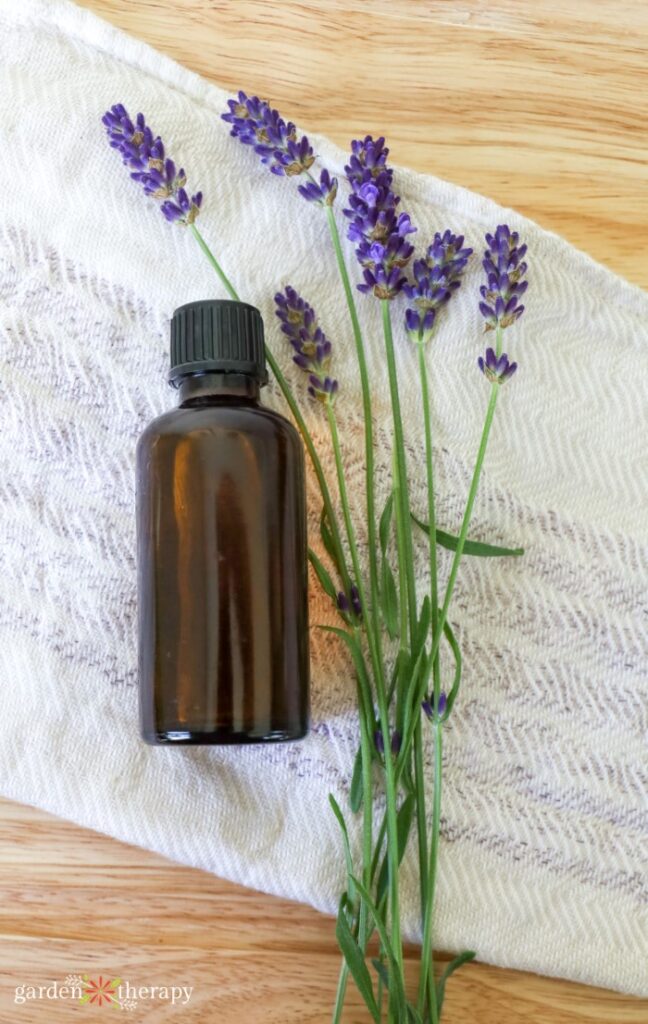
Lavender Biodegradable Soap Recipe
This is a basic, universal biodegradable soap recipe that works well for washing dishes, hands, and the body. In less than five minutes, you can have some soap for camping or in your backyard!
Equipment
Materials
See the recipe card at the bottom of this post for exact measurements.
Jump to Recipe- Water that is distilled or boiled
- Unscented concentrated liquid Castile soap
- Olive oil
- Lavender essential oil
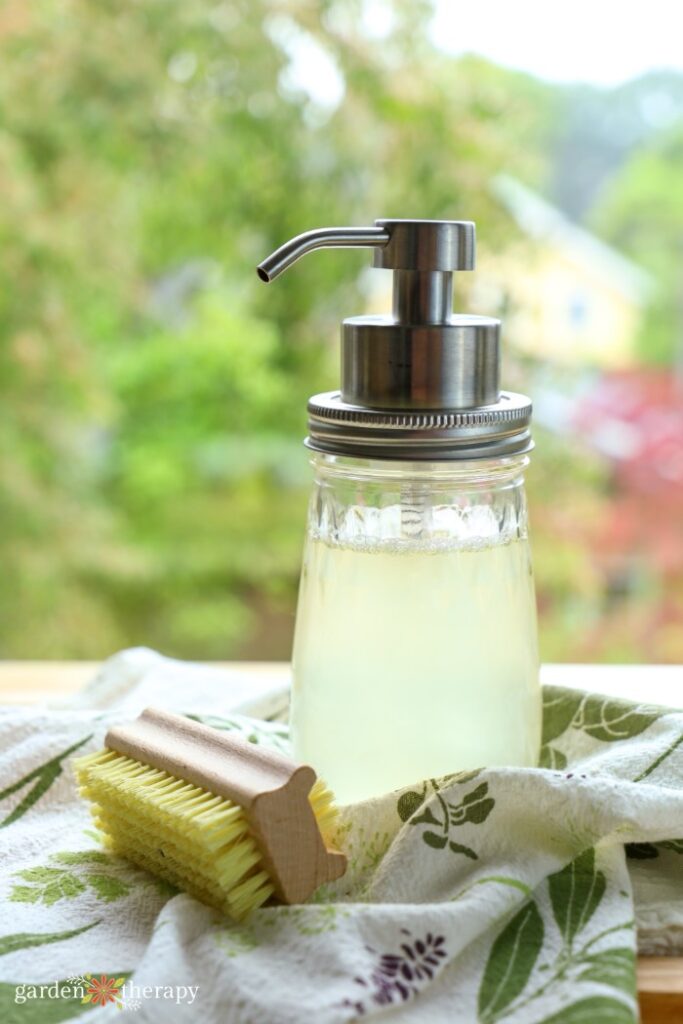
Make It!
For my base of the recipe, I use Castile soap that I refill from a local dispensary. You can also buy the same brand, Dr. Bonner’s, online. The soap itself is extremely concentrated so you need to dilute it and scent it before it’s ready for use.
To make your soap, whisk together the olive oil, water, and castile soap until it’s homogenous. Then, add in your lavender essential oil and whisk again.
With a funnel, pour it into your container of choice. For hand soap, a glass container with a pump works well.
How to Use Biodegradable Soap
Before you use the soap, give it a good shake. You’ll have to do this less and less as it combines. The soap is good for 3 months.
Remember, half the battle of good hand washing is the action itself. Scrub and lather for at least 20 seconds and use a bristle brush to clean under fingernails.
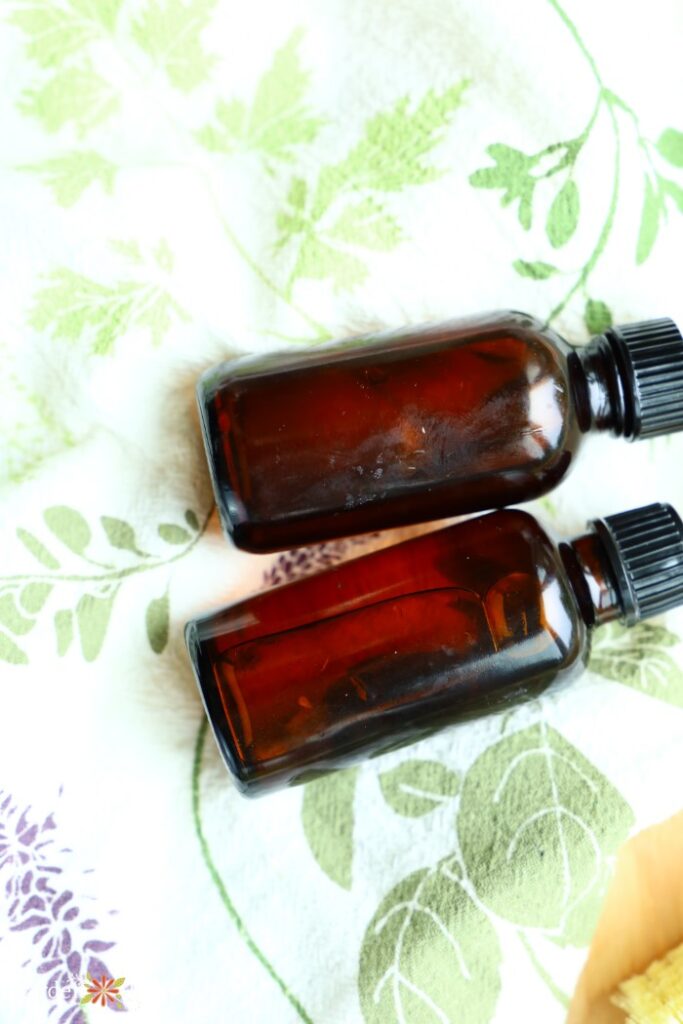
Frequently Asked Questions About Biodegradable Soap
Most of the chemicals in commercial soaps do not break down naturally and are difficult to filter out. Biodegradable soap does not contaminate the surrounding environment or water systems. If you go camping, have an outdoor sink, or a septic system, it’s highly recommended to use biodegradable soap.
If it’s truly biodegradable then, no! Labels aren’t very trustworthy when it comes to biodegradable soap as many toxins and chemicals can still be hidden in it. Instead, read the ingredient list, buy from brands you trust, or try your hand at making your own biodegradable soap.
Biodegradable soap completely degrades after one year. Because the ingredients are in pure form and come from nature, without laboratory assistance, they don’t cause harm to the environment. Many commercial soaps can harm aquatic life even after treatment, can affect plants, cause algae blooms, and even can disrupt your septic tank.
Start off by reading labels and looking for the words biodegradable. Then, check the ingredient list. Natural soaps will be made of oils and fats. Anything that isn’t biodegradable will contain petrochemicals, phthalates, surfactants, parabens, and other chemicals. Make sure you know what every ingredient is!
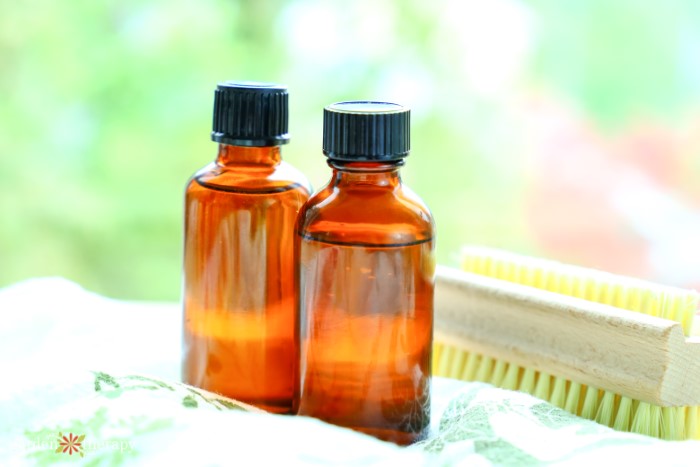
Leave any of your other questions in the comments down below! I hope you enjoy your biodegradable soap. Mother Nature thanks you!
Lavender Biodegradable Soap
Equipment
- Glass container for mixing
- Soap pump
Supplies
- 400 ml distilled or boiled water
- 100 ml unscented concentrated liquid Castile soap
- 2 tbsp olive oil
- 10 drops lavender essential oil
Instructions
- Mix together your water, Castile soap, and olive oil until well combined.
- Add in your lavender essential oil and mix again.
- Use the funnel to add liquid to the soap container.
- Shake before use. This soap is good for up to 3 months.

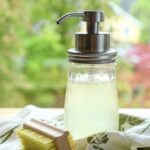
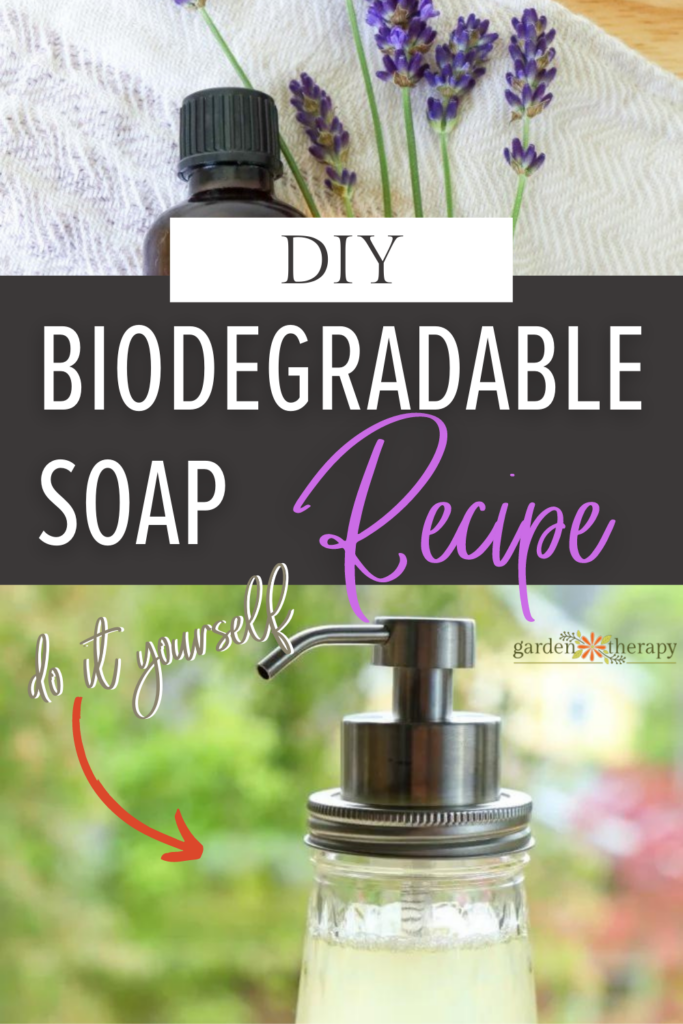



Thank you Stephanie Rose for this recipe. I’ve wondered if castile soap was organic, but didn’t know that you could get it that way. I appreciate it. Can you tell me if this recipe can be used as a body wash in the shower too? I can’t wait to try this.
absolutely! I like a bar soap in the shower a bit more because it’s more moisturizing, but try both and see what you like best.
I just started and i love this website already its really helpful thankyou!